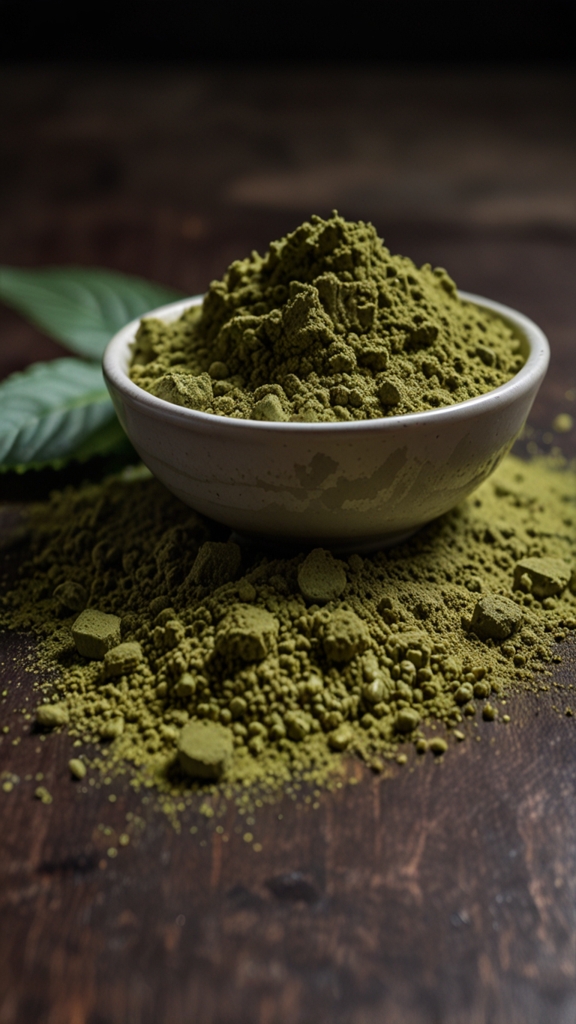Introduction
Kratom, scientifically known as Mitragyna speciosa, is a tropical tree native to Southeast Asia, primarily found in countries like Thailand, Indonesia, and Malaysia. For centuries, its leaves have been used in traditional medicine, and in recent years, it has gained popularity in Western countries as a herbal supplement. At the heart of kratom’s effects are its alkaloids—naturally occurring compounds that interact with the body’s receptors to produce a variety of physiological responses. This article delves into the most prominent alkaloids found in kratom, their effects, and their potential benefits and risks.
What Are Alkaloids?
Alkaloids are a group of naturally occurring chemical compounds that mostly contain basic nitrogen atoms. They are known for their pharmacological effects and are often found in various plants. These compounds can have diverse effects, ranging from pain relief and sedation to stimulation and mood enhancement. In kratom, the primary alkaloids include:
- Mitragynine
- 7-Hydroxymitragynine
- Speciogynine
- Paynantheine
1. Mitragynine
Mitragynine is the most abundant alkaloid in kratom, making up approximately 60% of the total alkaloid content. It acts primarily as a partial agonist at the mu-opioid receptors, which means it can produce pain relief and sedation without the same level of risk associated with stronger opioids.
Effects:
- Pain Relief: Many users report significant pain relief when consuming kratom high in mitragynine.
- Mood Enhancement: It may enhance mood and provide a sense of well-being.
- Stimulation at Low Doses: At lower doses, mitragynine can act as a stimulant, increasing energy and alertness.
2. 7-Hydroxymitragynine
7-Hydroxymitragynine is a less prevalent alkaloid but is notably more potent than mitragynine. It is often cited as the compound responsible for the analgesic effects of kratom.
Effects:
- Powerful Pain Relief: Research indicates that 7-hydroxymitragynine may be several times more effective at relieving pain than morphine.
- Sedative Effects: At higher doses, it can induce sedation, making it useful for those dealing with severe pain or anxiety.
3. Speciogynine
Speciogynine is another significant alkaloid found in kratom, though its effects are less understood than mitragynine and 7-hydroxymitragynine.
Effects:
- Relaxation: Some users report feelings of relaxation and calmness when using kratom high in speciogynine.
- Mild Analgesic Effects: It may also contribute to the overall analgesic properties of kratom, though more research is needed.
4. Paynantheine
Paynantheine is the second most abundant alkaloid in kratom after mitragynine. It has structural similarities to the other major alkaloids and contributes to kratom’s effects.
Effects:
- Sedation and Pain Relief: Like other alkaloids, paynantheine can offer pain relief and may also have sedative properties.
Potential Benefits of Kratom Alkaloids
Kratom alkaloids are believed to provide a range of benefits, including:
- Pain Management: Many users find kratom effective for chronic pain conditions, offering an alternative to pharmaceutical painkillers.
- Anxiety Relief: Some studies suggest kratom can help reduce anxiety levels, contributing to its appeal as a natural remedy.
- Mood Enhancement: Users often report improved mood and feelings of well-being, which can be especially beneficial for those dealing with depression.
- Increased Energy and Focus: At lower doses, kratom may help improve concentration and provide an energy boost.
Risks and Considerations
While kratom may offer various benefits, it is essential to consider the potential risks associated with its use:
- Dependence and Withdrawal: Regular use of kratom can lead to dependence, and withdrawal symptoms may occur when stopping.
- Side Effects: Some users experience side effects, including nausea, dizziness, constipation, and irritability.
- Lack of Regulation: As a dietary supplement, kratom is not regulated by the FDA, leading to concerns about product quality and safety.
Conclusion
Kratom alkaloids present a fascinating area of study for both researchers and users alike. While they offer potential benefits, it is crucial to approach their use with caution and awareness of the associated risks. As interest in kratom continues to grow, further research will be necessary to understand its complex chemistry, effects, and long-term implications fully. Always consult with a healthcare professional before starting any new supplement regimen, particularly one as potent as kratom.


Hi, this is a comment.
To get started with moderating, editing, and deleting comments, please visit the Comments screen in the dashboard.
Commenter avatars come from Gravatar.